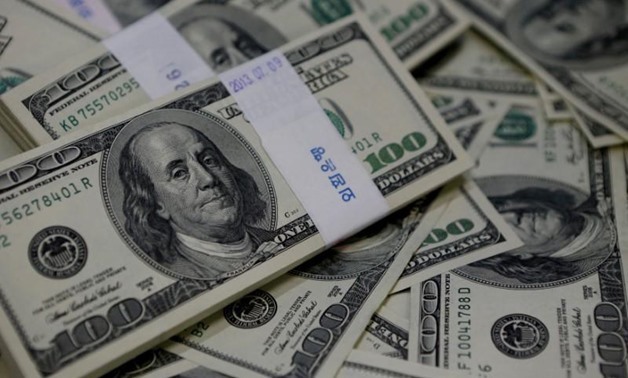
U.S. one-hundred dollar bills are seen in this picture illustration, August 2, 2013 - REUTERS/Kim Hong-Ji/Illustration
TOKYO - 27 August 2018: The dollar’s safe-haven appeal dimmed on Monday after risk sentiment in the broader markets improved following a well-received speech from Federal Reserve Chairman Jerome Powell.
At a closely watched symposium at Jackson Hole, Wyoming, the Fed chairman on Friday emphasised the central bank’s push to raise interest rates despite President Donald Trump’s recent criticism of higher borrowing costs.
Powell made the case that gradual rate hikes are the best way to protect the U.S. economic recovery and keep job growth as strong as possible and inflation under control.
His comments were also seen to have disappointed some dollar bulls hoping for a more hawkish message.
“The Fed chair suggested that rate hikes will continue amid a strong economy, but he also stressed that monetary tightening would be gradual,” said Koji Fukaya, president of FPG Securities in Tokyo.
“That has been positive for equities, while enhanced risk appetite has been negative for the dollar,” he added.
The S&P 500 .SPX and the Nasdaq .IXIC rose to record highs on Friday, with Powell considered to have stuck with the Fed's policy narrative and doing little to change market expectations for rate hikes in September and December. Equities in Asia rose across the board on Monday.
The Treasury yield curve reached its flattest level since 2007 on Friday in the wake of Powell’s speech. The two-year yield edged up as the Fed stuck to its rate hike trajectory, while the central bank’s restrained inflation view anchored the 10-year yield. [US/]
“Powell sounded natural and his speech was nothing out of the ordinary,” said Mitsuo Imaizumi, chief forex strategist at Daiwa Securities.
“But he stuck with the current policy trajectory and this means that the flattening of the U.S. yield curve would be allowed to continue”.
A flatter yield curve, in which the rise in longer-term bond yields lags those of shorter-dated bonds, is seen as a factor reducing support for the dollar.
The dollar index against a basket of six major currencies .DXY lost 0.1 percent to 95.07, after slipping more than 0.5 percent in the previous session.
The euro was little changed at $1.1624 EUR= after going as high as $1.1654, its strongest since Aug. 2. The single currency had advanced more than 0.7 percent on Friday.
The dollar was down 0.15 percent at 111.06 yen JPY=.
The Mexican peso MXN=D4 was up 0.8 percent at 18.77 per dollar.
The peso was lifted by news that U.S. and Mexican trade negotiators were coming close to squaring away bilateral differences on the North American Free Trade Agreement (NAFTA). Talks are scheduled to resume later on Monday.
The Chinese yuan extended is rally in the onshore market to as high as 6.8061 per dollar CNY=CFXS, its strongest since Aug. 8.
The yuan had surged about 0.8 percent in onshore trade on Friday after the People’s Bank of China said it was adjusting its methodology for fixing the yuan’s daily midpoint, amid broad dollar strength and ongoing trade tensions between Washington and Beijing.
Other emerging currencies including the Turkish lira TRYTOM=D4 and the South African rand ZAR=D4 were mostly steady against the dollar.
A broad retreat in emerging market currencies, notably the Turkish lira, earlier this month had been a key source of strength for the greenback.

Comments
Leave a Comment